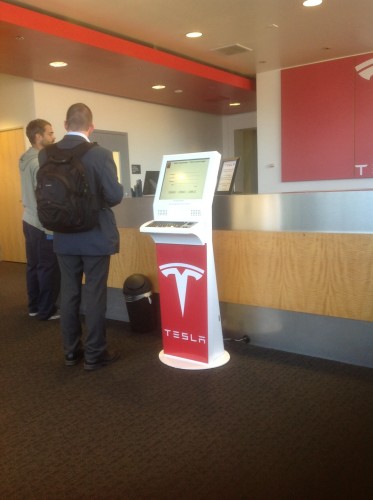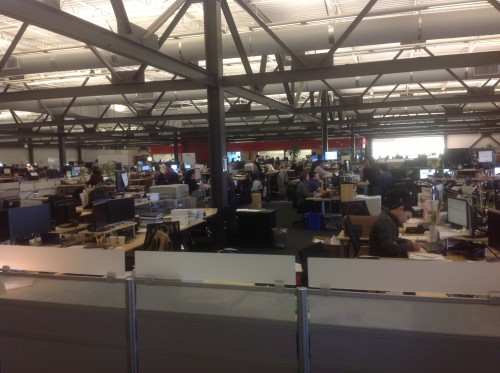Should Tesla Motors Use 3D Printing for Tooling?
 Let me take a stab at describing Tesla Motors in one word: streamlined. From the sloping lines on the Model S and the robotic assembly at Nummi to the touchscreen reception that automatically prints visitor badges and notifies employees of visitors, the company excels at applying technology to enhance speed. It should come as no surprise that half the Tesla team has a background in consumer electronics while the other half are veterans of the automotive world.
Let me take a stab at describing Tesla Motors in one word: streamlined. From the sloping lines on the Model S and the robotic assembly at Nummi to the touchscreen reception that automatically prints visitor badges and notifies employees of visitors, the company excels at applying technology to enhance speed. It should come as no surprise that half the Tesla team has a background in consumer electronics while the other half are veterans of the automotive world.
I set up a meeting to speak with Tesla after hearing Peter Carlsson’s keynote at CSCMP. As I noted in a previous blog post, Peter highlighted the turn around time for tooling as a major challenge. I was fortunate to meet with Paolo Cerruti for a lively discussion about bleeding-edge fabrication of molds and tooling inserts using 3D printing
 Behind the curtain at Tesla Motors headquarters in Palo Alto[/caption]
Behind the curtain at Tesla Motors headquarters in Palo Alto[/caption]
According to Mckinsey, 50% of injection molds will be directly 3D printed in 2025. This transformation is driven by the increasing needs for a responsive supply chain and the decreasing cost of 3D printing. Metal 3D printing will drop in cost precipitously over the next few years as competition increases due to expiring patents, production of machines reach economies of scale and new processes for refining exotic metals decrease material costs by an order of magnitude.
For a lean manufacturer like Tesla, time is money. The company is famous for keeping designs fluid even as manufacturing ramps up. 3D printing enables manufacturers that are highly sensitive to turn-around times to stave off product delays.
← Back to Writing